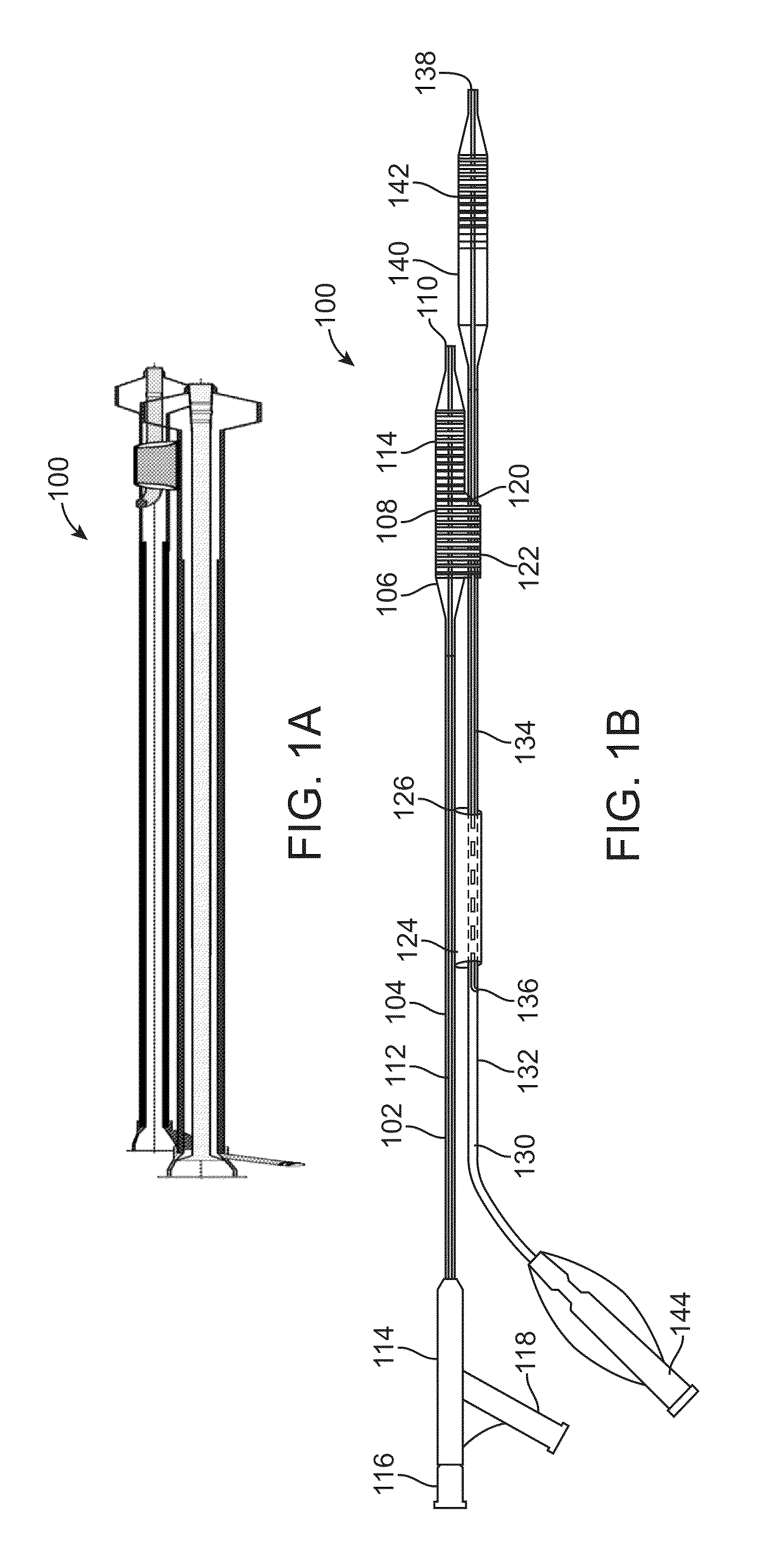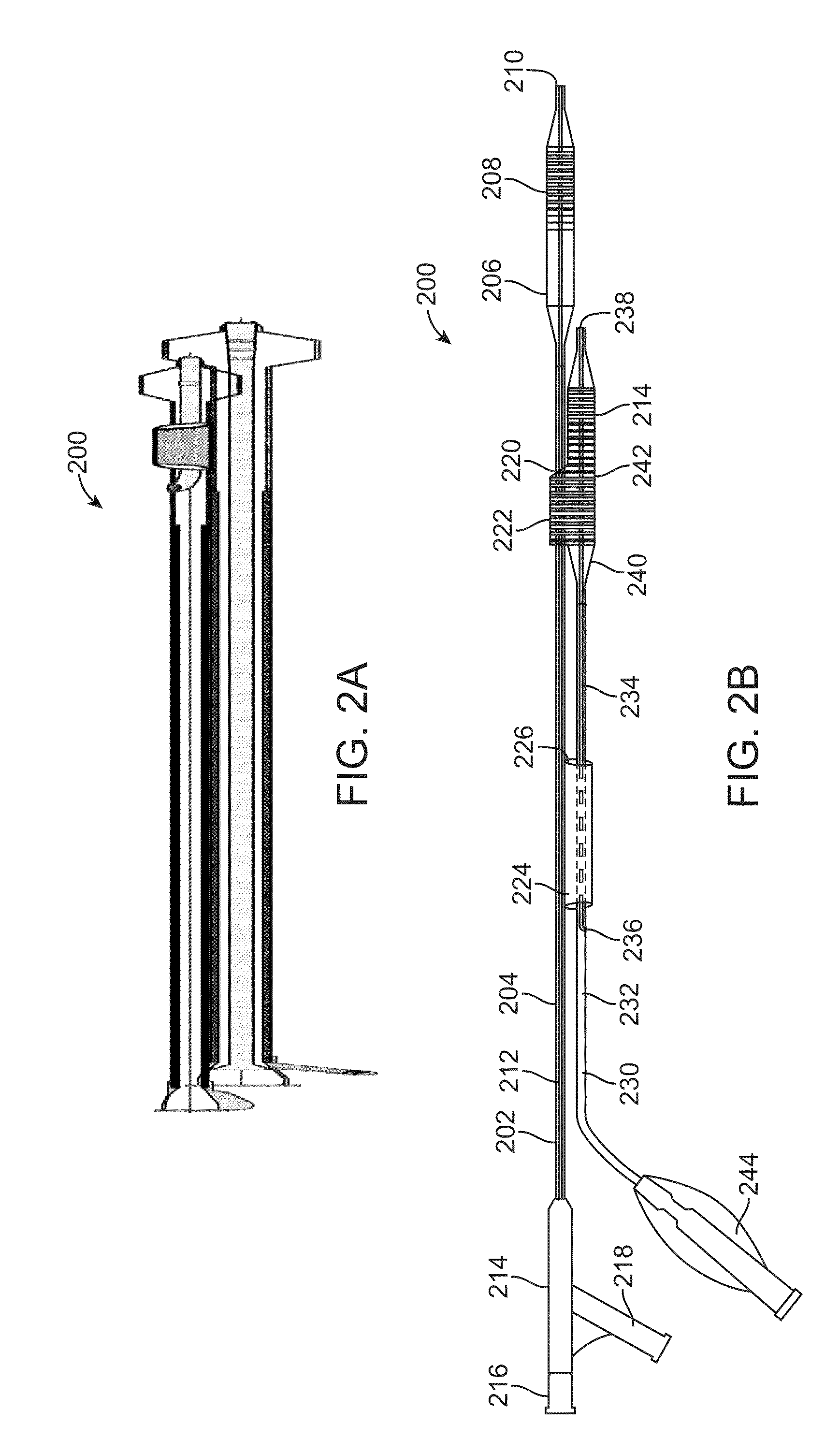System and methods for treating a bifurcation
a bifurcation and system technology, applied in the field of medical devices, can solve the problems of limited success rate, stents and connecting balloon catheter portions may obstruct the use of post-operative devices to treat a daughter vessel, and stents are not fully able to prevent in-stent restnosis (isr) or caused restnosis
- Summary
- Abstract
- Description
- Claims
- Application Information
AI Technical Summary
Benefits of technology
Problems solved by technology
Method used
Image
Examples
Embodiment Construction
[0075]The present invention relates to delivery systems for delivery of stents to vessel bifurcations having a main branch and a side branch, and is generally configured to at least partially cover a portion of a the side branch as well as a portion of the main branch. However, this is not intended to be limiting, and one of skill in the art will appreciate that the devices and methods described herein may be used for treating other regions of the body.
[0076]The scientific community is slowly moving away from a main branch vs. side branch model and nomenclature. It is now well accepted that a “mother” vessel bifurcates into two “daughter vessels,” the two vessels that are anatomically after the carina. The vessel that appears to be the continuation of the mother vessel is usually less angulated. The other vessel is frequently smaller in diameter and may be commonly referred to as the side branch, or a daughter vessel. Therefore, in this specification, the terms “main branch,”“trunk,...
PUM
 Login to View More
Login to View More Abstract
Description
Claims
Application Information
 Login to View More
Login to View More - R&D
- Intellectual Property
- Life Sciences
- Materials
- Tech Scout
- Unparalleled Data Quality
- Higher Quality Content
- 60% Fewer Hallucinations
Browse by: Latest US Patents, China's latest patents, Technical Efficacy Thesaurus, Application Domain, Technology Topic, Popular Technical Reports.
© 2025 PatSnap. All rights reserved.Legal|Privacy policy|Modern Slavery Act Transparency Statement|Sitemap|About US| Contact US: help@patsnap.com



